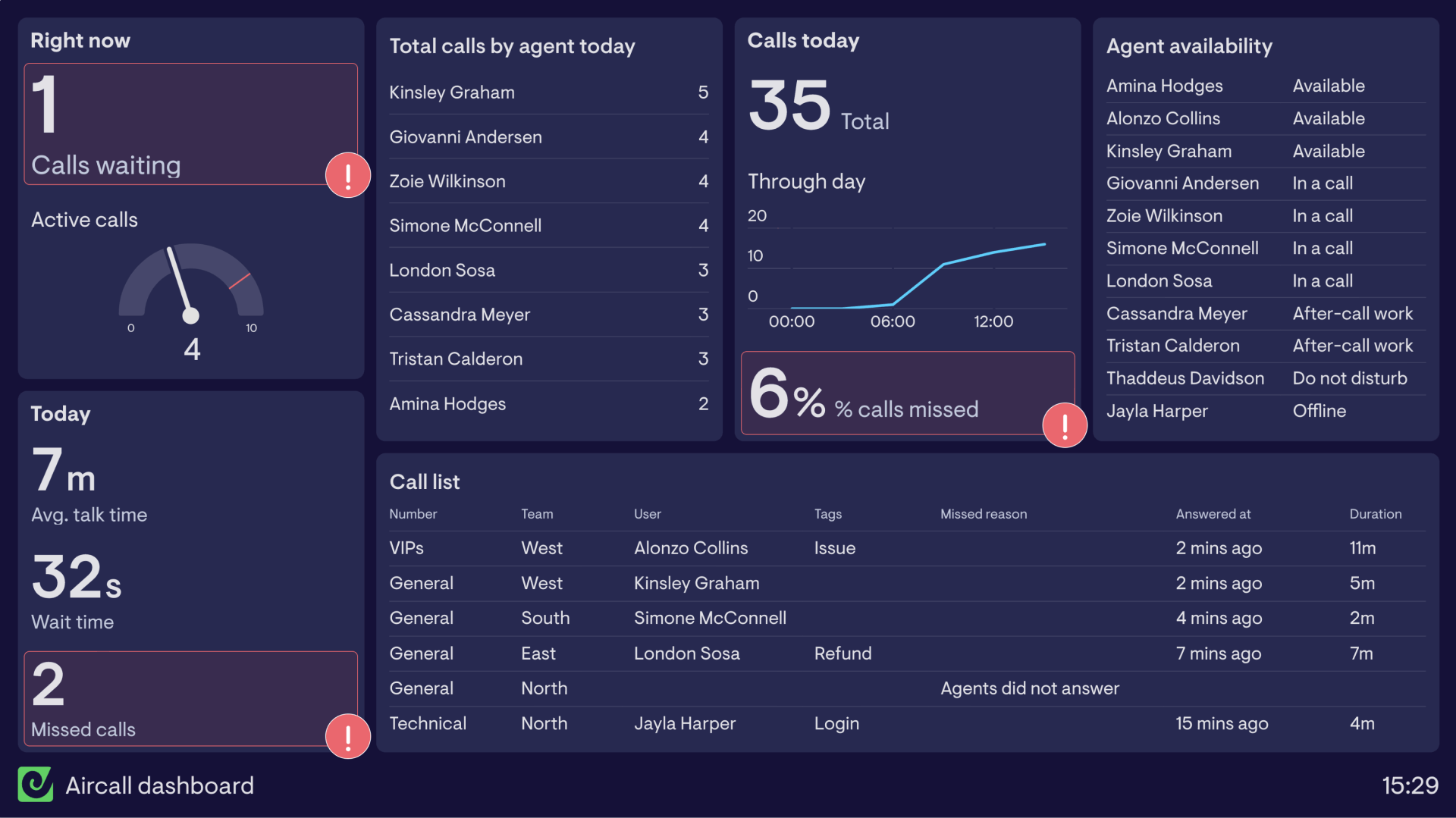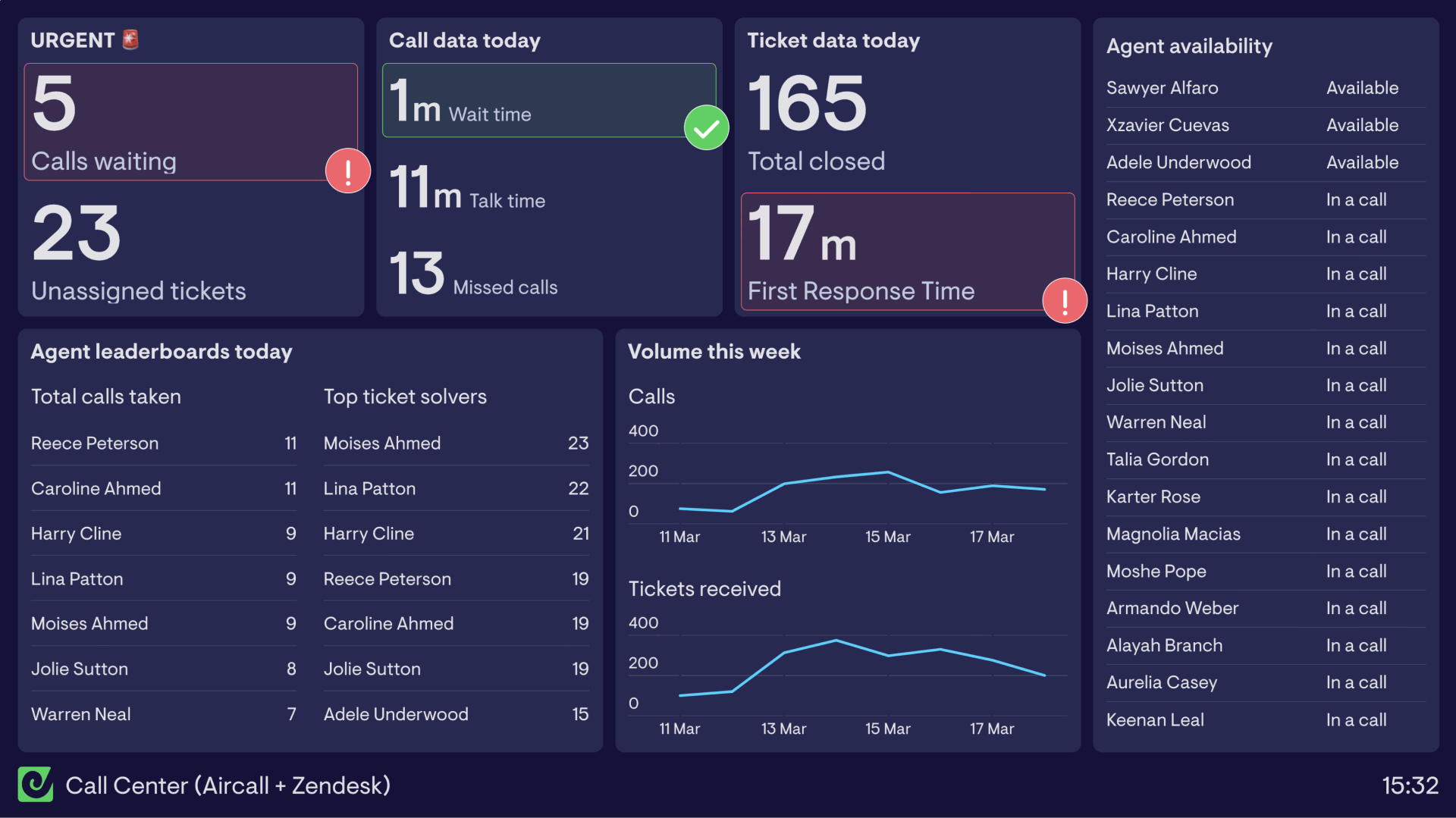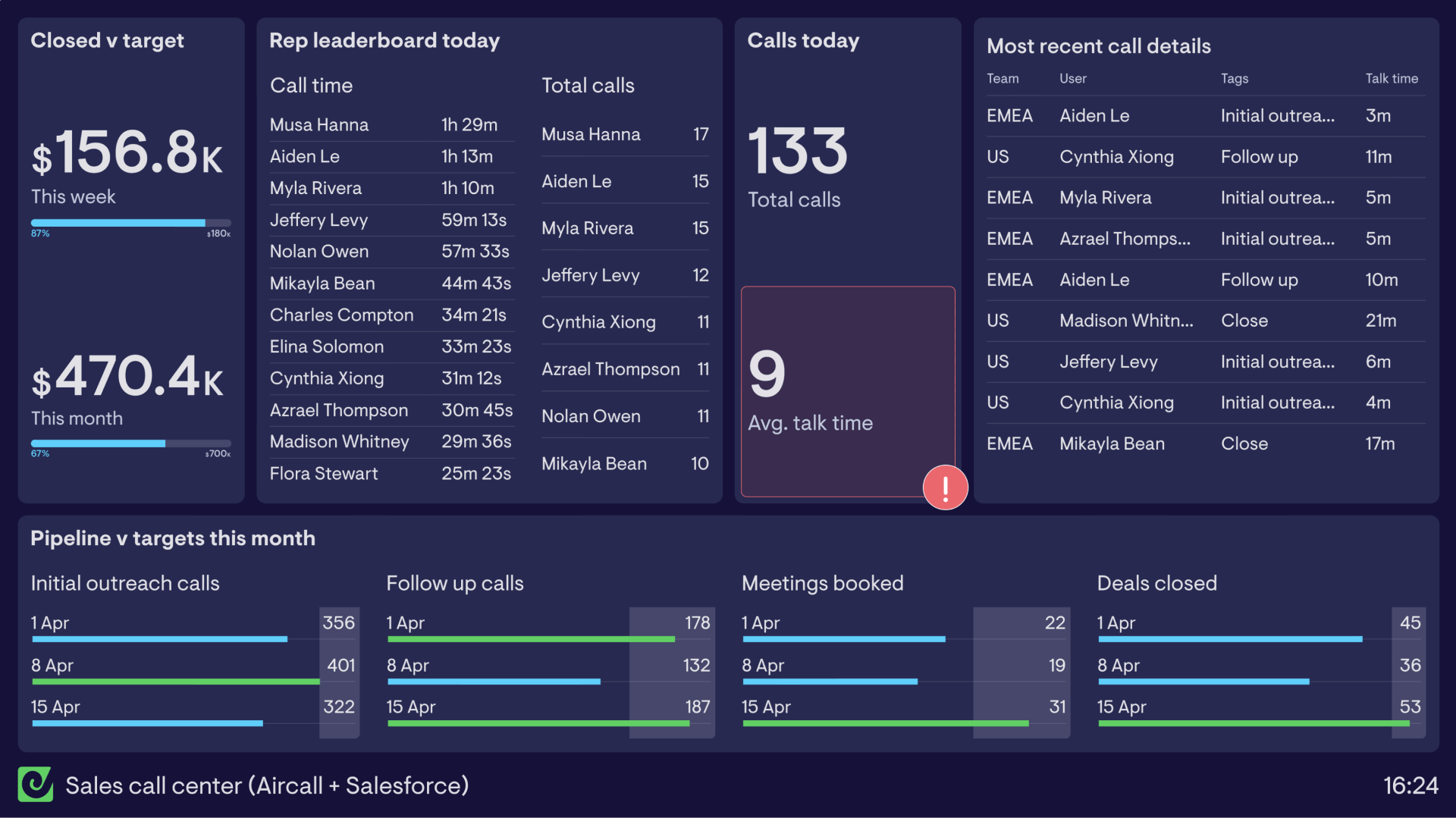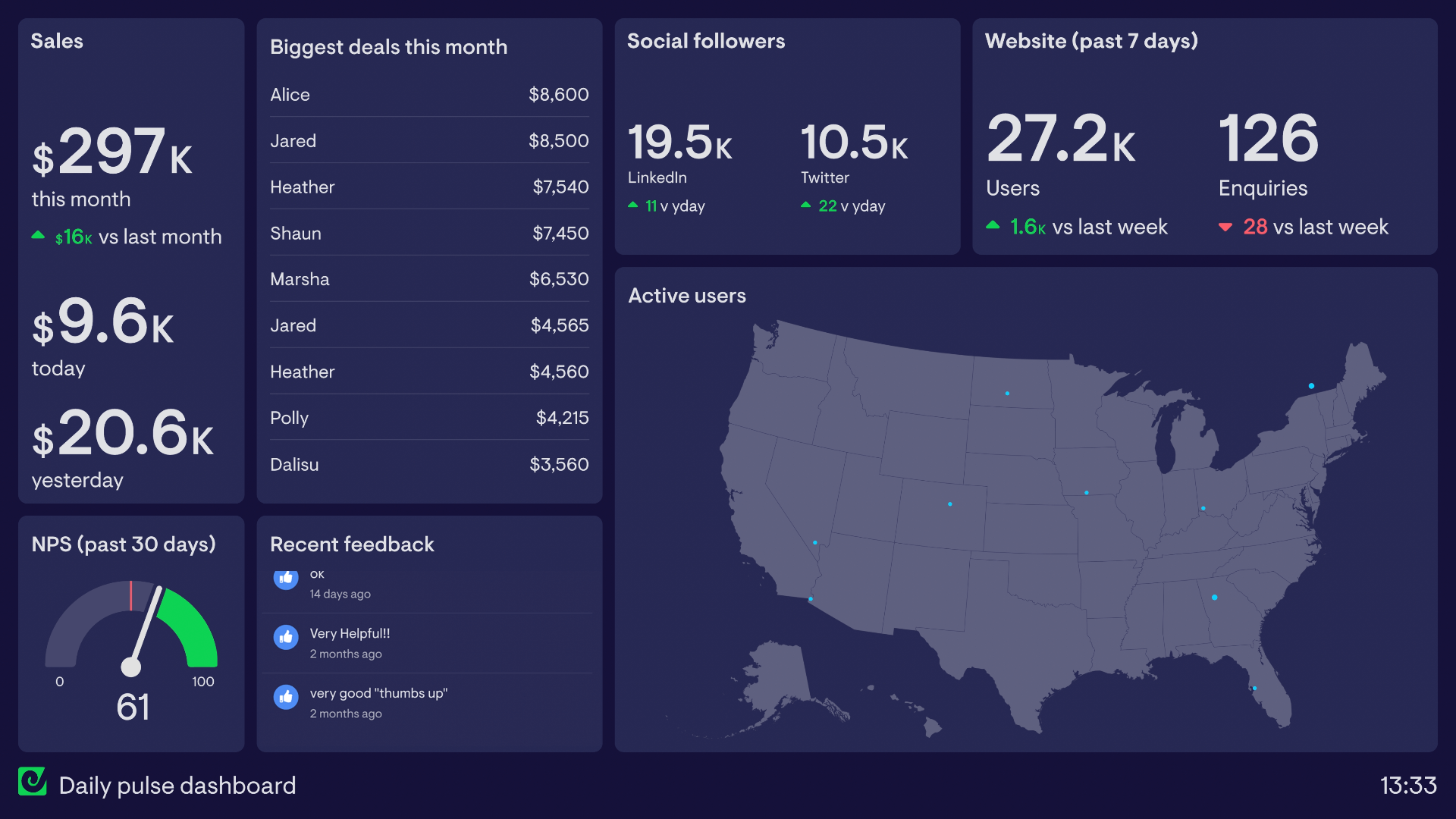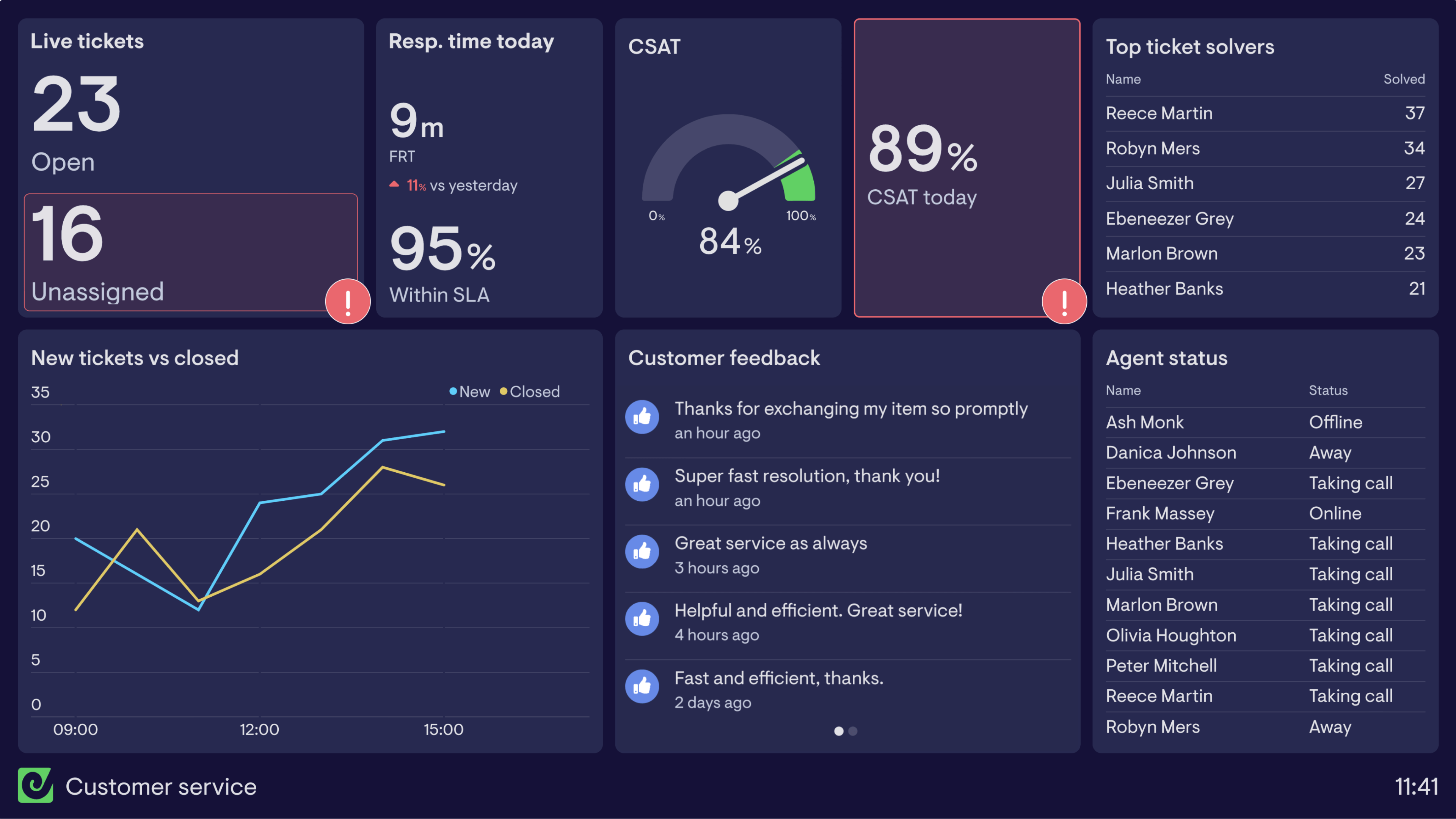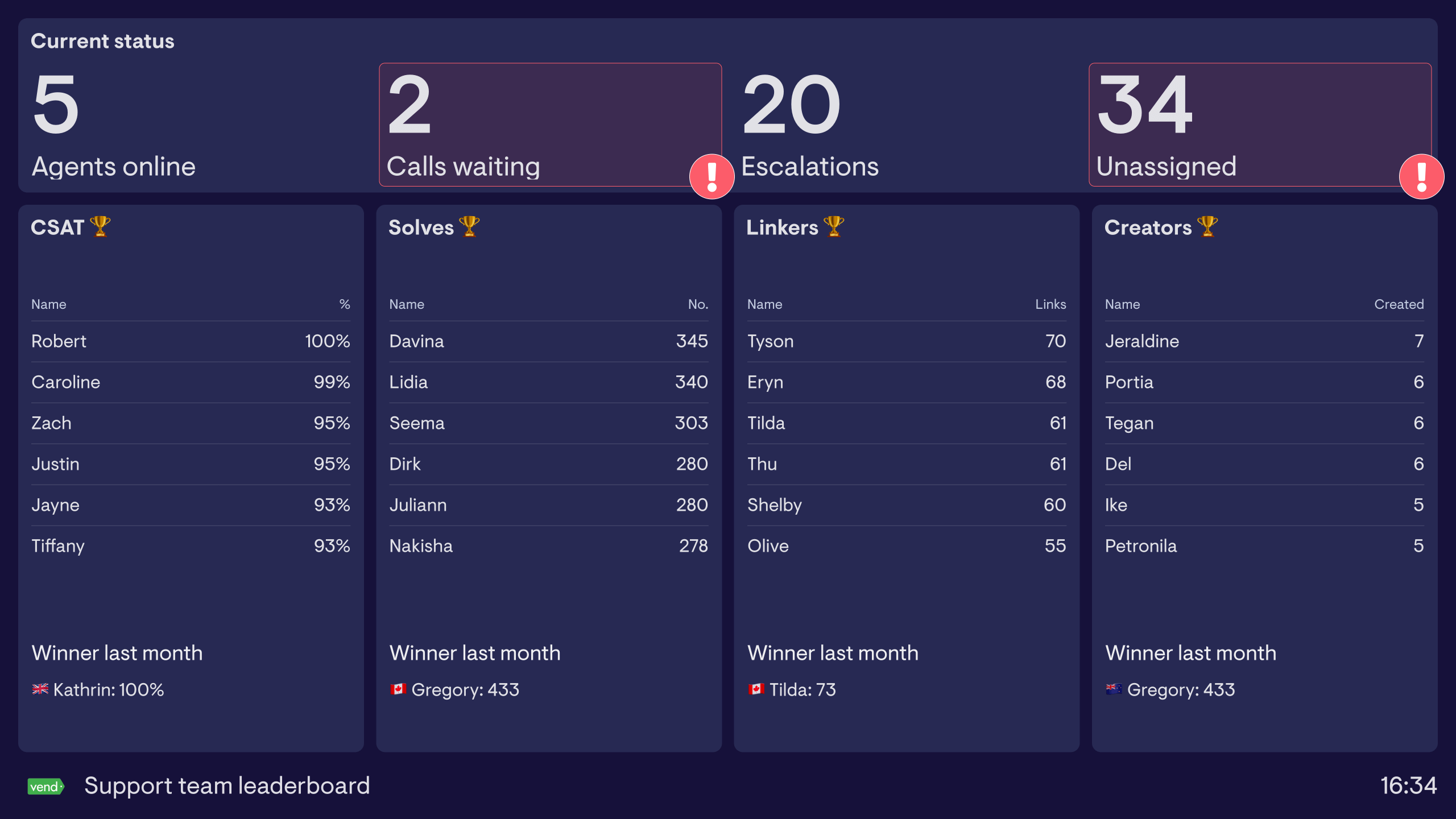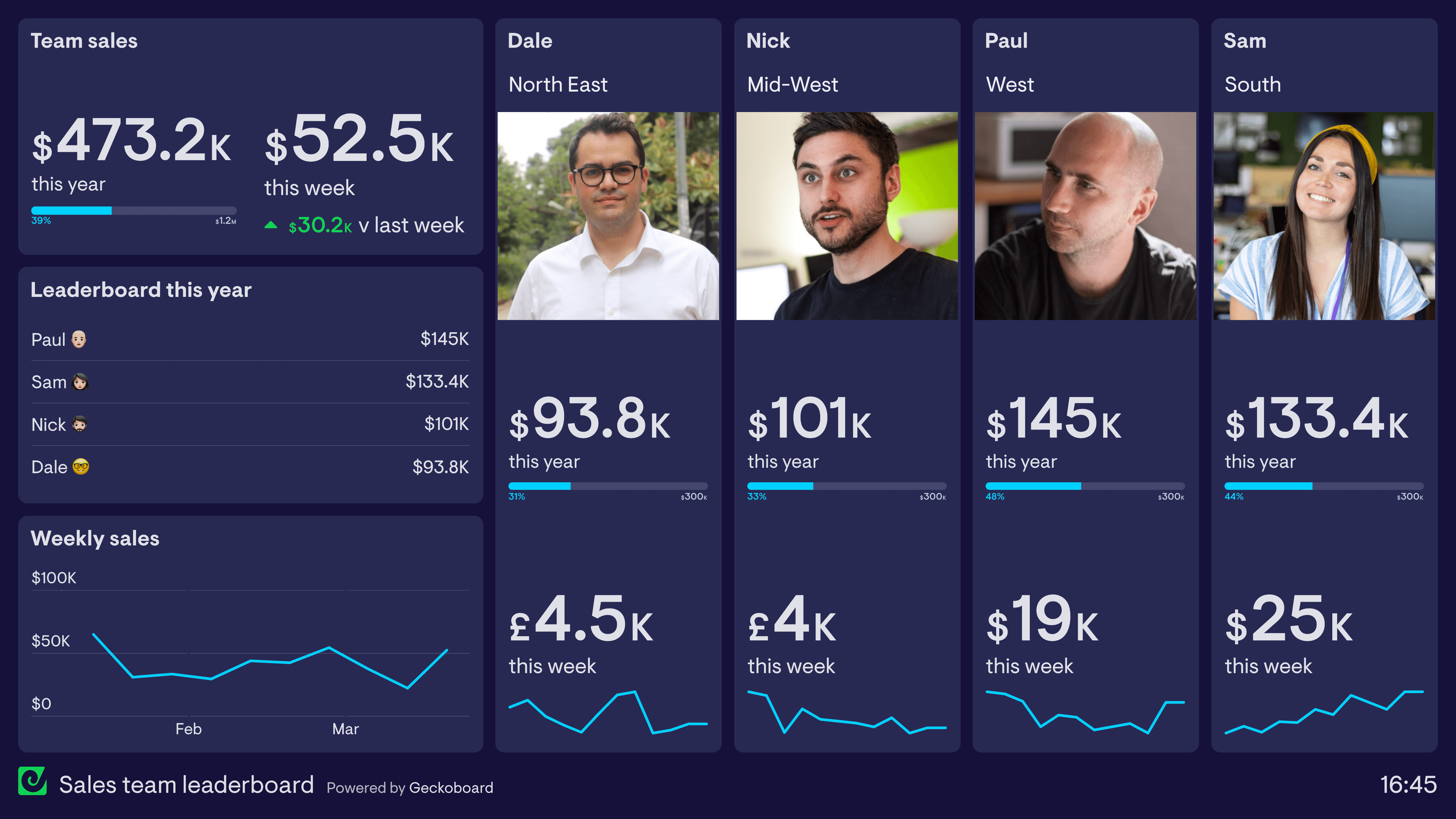What is an Aircall dashboard?
An Aircall dashboard visualizes live call metrics from Aircall and allows you to monitor the performance of your team.
Aircall dashboards help managers keep a real-time view of KPIs to make sure appropriate levels of service are being met. They can also be used to motivate the sales and customer service teams who work on the phones.
In a call center setting, dashboards on a TV are particularly useful as they make KPIs and performance data available to everyone, at a glance.
Examples of Aircall dashboards
Aircall dashboard
This Aircall dashboard brings key call data together, giving the manager an overview of what’s happening in the call center, as well as giving agents visibility of the call queue and their individual performance.
In the top left corner, Calls Waiting and Active Calls are grouped together so that everyone can see exactly what’s happening on the phone lines right now.
Beneath this are the key call metrics for the day; Average Talk Time, Wait Time and Missed Calls. This section of the dashboard is most useful to agents who have goals around each of these metrics. By maintaining a lower wait and talk time and reducing missed calls the customer experience overall is much better.
Also important for the agents is their individual performance when it comes to answering calls, so a leaderboard has been included to motivate agents to move through calls efficiently.
To help the manager monitor and organize workflows, we’ve included a group of metrics around the calls received today as well as agent availability and a detailed call list. The call list is particularly helpful to see more information around the types of calls coming in and where calls are being missed.
Focus area
Calls Waiting, Average Talk Time, Wait Time, Missed Calls
Who looks at it?
Customer Support Agents, Customer Support Manager
How often?
Throughout the day
- Aircall
Aircall & Zendesk call center dashboard
This call center dashboard visualizes data from Aircall and Zendesk, to give the whole team an overview of their daily performance in real time.
Including a mix of call metrics from Aircall and ticket metrics from Zendesk, agents are able to see a combination of team and individual data to let them know how they’re performing against targets.
Starting on the left side of the dashboard, the urgent metrics are highest priority, and most in need of attention if they increase above a set level. Calls waiting and unassigned tickets should be kept as low as possible at all times in order to provide their customers with great service.
Following this in the top row, we have call data based on today’s performance on the phones including Wait Time, Talk Time and Missed Calls.
Beside the daily call data are two metrics focused on tickets, Total Closed and First Response Time (FRT).
Tracking this data around calls and tickets allows the team to know if they’re meeting expected levels of service.
Along the bottom are two leaderboards for the agents to see how they are performing in terms of the wait time between calls and number of tickets solved. These help encourage friendly competition and motivate the team to top the charts.
In order for the agents to have an understanding of the volumes they’re working with, the number of calls and received tickets are outlined in a line chart. This allows everyone to know what to expect in terms of workload throughout the week.
Finally, the agent availability table outlines everyone’s status to help always know who’s available and to streamline shift handovers for the team leaders.
Focus area
Calls Waiting, Unassigned Tickets, Wait Time, First Response Time (FRT)
Who looks at it?
Customer Support Agents, Customer Support Team Leaders, Customer Support Manager
How often?
Throughout the day
- AircallZendesk Support
Aircall & Salesforce dashboard
This sales call center dashboard combines data from Aircall and Salesforce to bring key metrics together onto a TV dashboard for the sales team.
Drawing on a combination of KPIs around pipeline and deals closed from Salesforce as well as call metrics from Aircall, the sales team are able to get a true picture of how their daily workload translates into hitting their monthly sales targets.
The dashboard clearly outlines the targets around deals closed for the week and month, as well as weekly pipeline goals which enable them to meet these.
This sales team is based within a call center where they spend a lot of time outbound calling to build their pipeline. Using leaderboards with call time and total calls helps encourage friendly competition and gamifies the process of making large volumes of calls each day.
Sharing this dashboard on a TV screen within the call center makes the whole team aware of their progress towards goals on a daily basis.
Focus area
Outbound Calls, Pipeline Metrics, Sales Closed
Who looks at it?
Sales Reps, Sales Manager
How often?
Throughout the day
- AircallSalesforce
